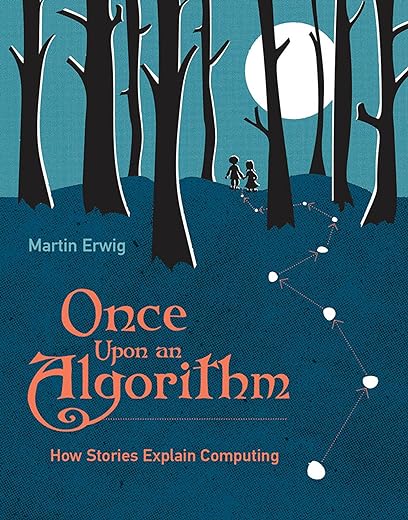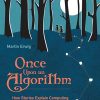Once Upon an Algorithm: How Stories Explain Computing
£17.20£18.00 (-4%)
Picture a computer scientist, staring at a screen and clicking away frantically on a keyboard, hacking into a system, or perhaps developing an app. Now delete that picture. In Once Upon an Algorithm, Martin Erwig explains computation as something that takes place beyond electronic computers, and computer science as the study of systematic problem solving. Erwig points out that many daily activities involve problem solving. Getting up in the morning, for example: You get up, take a shower, get dressed, eat breakfast. This simple daily routine solves a recurring problem through a series of well-defined steps. In computer science, such a routine is called an algorithm.
Erwig illustrates a series of concepts in computing with examples from daily life and familiar stories. Hansel and Gretel, for example, execute an algorithm to get home from the forest. The movie Groundhog Day illustrates the problem of unsolvability; Sherlock Holmes manipulates data structures when solving a crime; the magic in Harry Potter’s world is understood through types and abstraction; and Indiana Jones demonstrates the complexity of searching. Along the way, Erwig also discusses representations and different ways to organize data; “intractable” problems; language, syntax, and ambiguity; control structures, loops, and the halting problem; different forms of recursion; and rules for finding errors in algorithms.
This engaging book explains computation accessibly and shows its relevance to daily life. Something to think about next time we execute the algorithm of getting up in the morning.
Read more
Additional information
| Publisher | MIT Press (9 Aug. 2022) |
|---|---|
| Language | English |
| Paperback | 332 pages |
| ISBN-10 | 0262545292 |
| ISBN-13 | 978-0262545297 |
| Reading age | 18 years and up |
| Dimensions | 17.93 x 2.24 x 23.01 cm |




by Brian Clegg
I’ve been itching to start reading this book for some time, as the premise was so intriguing – to inform the reader about computer science and algorithms using stories as analogies to understand the process.
This is exactly what Martin Erwig does, starting (as the cover suggests) with Hansel and Gretel, and then bringing in Sherlock Holmes (and particularly The Hound of the Baskervilles), Indiana Jones, the song ‘Over the Rainbow’ (more on that in a moment), Groundhog Day, Back to the Future and Harry Potter.
The idea is to show how some aspect of the story – in the case of Hansel and Gretel, laying a trail of stones/breadcrumbs, then attempting to follow them home – can be seen as a kind of algorithm or computation and gradually adding in computing standards, such as searching, queues and lists, loops, recursion and more.
This really would have been a brilliant book if Erwig had got himself a co-author who knew how to write for the public, but sadly the style is mostly heavy academic, so the cleverness is rather wasted. Sometimes this comes across in labouring points and at others in spending a lot of effort on what is little more than defining labels for things, rather than providing useful information and context for the reader. It’s not that there’s not a lot of good material in there, just that it’s hard work to dig it out, where I’m sure the whole idea of using the stories was to make it more approachable.
Part of the problem is that the stories themselves don’t always work very well as an analogy for what’s happening in the computation. So, for example, in the section dealing with sorting he comes up with the task of sorting the tasks and places that Indiana Jones needs to deal with to find the Lost Ark. The unsorted list includes the likes of: disc, sunbeam, Marion and Nepal. The algorithm used involves finding the ‘smallest’ element… which somehow we are supposed to instantly see is Nepal. Using numbers would not have been so well-linked to the story, but at least it would have made some sense to the reader.
Perhaps the low point is the section that uses a part of the song ‘Over the Rainbow’ (giving us a tenuous story connection to The Wizard of Oz) to examine language and meaning. If you aren’t familiar with musical notation, I’m not sure it’s a very helpful analogy… and if you are, some of the ways it’s used (particular the assertion of what bars are for) doesn’t entirely make sense.
I was a professional programmer for a number of years, but without a computer science background. So I was very familiar with how to do this stuff, but knew nothing of the theory behind it. As such, I found the content of the book really interesting – and the story idea should have made it doubly brilliant – but the execution meant that it didn’t deliver anywhere near as well as it could have. Even so, there’s a lot to savour, and it’s definitely worth persevering to get a feel for why computer programs involve far more than just ‘cutting code.’